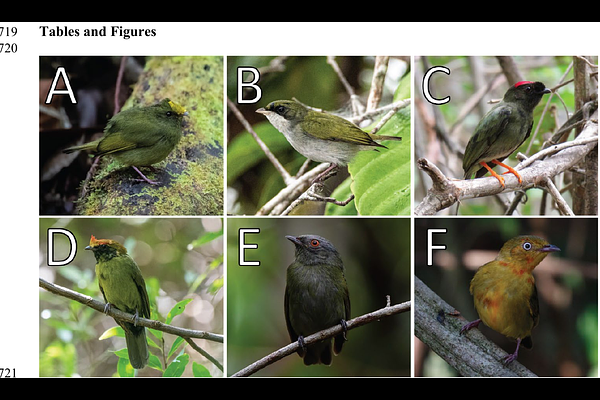Developmental evolution of social signals in the delayed plumage maturation of manakins (Aves: Pipridae)

Developmental evolution of social signals in the delayed plumage maturation of manakins (Aves: Pipridae)
Taylor, L. U.; Prum, R. O.
AbstractAvian plumage maturation involves replacing feathers, via discrete molts, until reaching an iteratively-regenerated definitive plumage. This process usually takes about one year. In the Neotropical lekking manakins (Pipridae), males of most species exhibit delayed plumage maturation (DPM), passing through drab predefinitive plumages for two or three years before reaching a bright, sexually dimorphic, definitive plumage. We used a phylogenetic analysis to investigate the evolutionary history of DPM in manakins. Our unique comparative dataset derived characters from a graph structure representing the developmental schedules of individual, colorful plumage patches. We traced the origin of one-year DPM to the ancestor of sexually dichromatic Piprinae manakins, followed by three separate origins of prolonged, two-year DPM, plus one subsequent extension to three-year DPM. Consistent with social signaling hypotheses, prolonged DPM evolved to reveal and maintain signals of young male status. This interspecific pattern sheds light on the sociosexual development of lekking birds, a topic usually restricted to autecological field studies. By detailing heterochronic dynamics in manakin plumage evolution, we also show how the iterative regeneration of characters like bird feathers, insect instars, mammalian antlers, and angiosperm flowers can create multiple distinct levels of developmental homologies among bodies, sexes, and species.